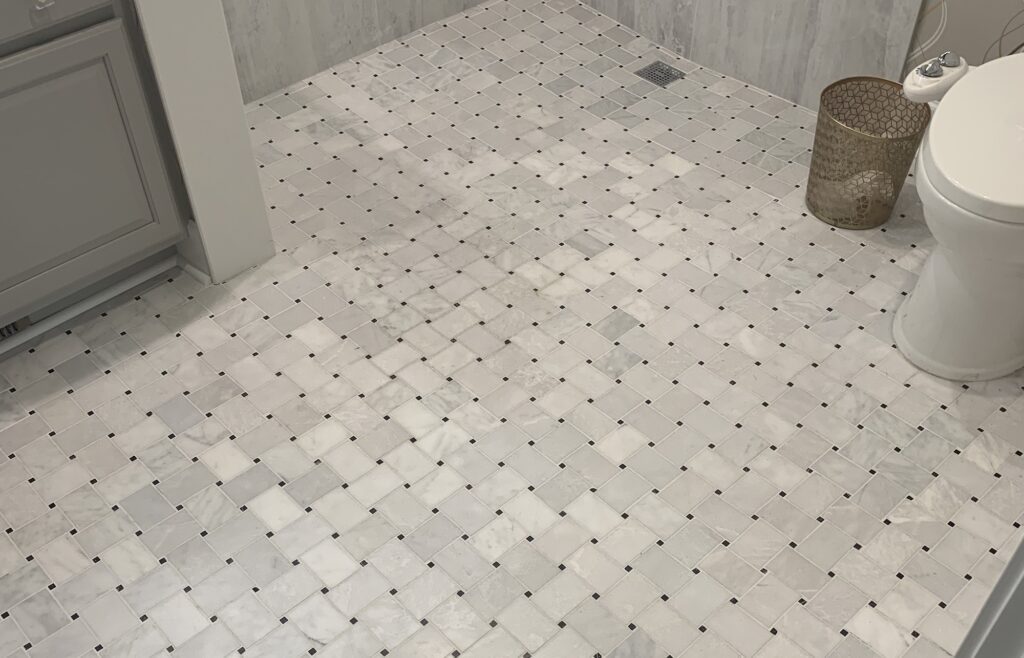Navigating the complexities of choosing the right tiles for your home can be challenging, especially with the variety of options available. For homeowners in Reno, understanding the differences between stone, porcelain and ceramic tiles is essential for making an informed decision. At Ceramic Tile Center in Sparks, Nevada, we aim to provide you with all the information you need to choose the best tiles for your home. This guide covers the key aspects of cost, durability, maintenance, and aesthetic appeal to help you decide which type of tile is better suited for your needs.
Cost Comparison:
Stone tiles are generally more expensive than ceramic tiles due to their natural composition and extraction process. This cost difference is mainly because stone tiles, such as marble, granite, and travertine, are quarried and then cut into tiles, which can be labor-intensive and expensive. However, certain types of stone, like some marbles, can be more affordable depending on the source and grade.
On the other hand, ceramic and porcelain tiles offer a more budget-friendly option with consistent pricing. They are manufactured from clay and other materials and then fired at high temperatures, which makes them less expensive to produce. This affordability makes ceramic tiles accessible for various projects, allowing homeowners to achieve a stylish look without breaking the bank.
Durability and Maintenance:
Stone tiles are renowned for their longevity and strength, making them ideal for high-traffic areas such as hallways, kitchens, and bathrooms. They are highly resistant to wear and tear, and if they do become worn, they can often be polished to restore their original shine. However, some types of stone, like marble and limestone, can be more susceptible to staining and scratching, requiring regular sealing and maintenance.
Porcelain tiles are the most durable but can be less resistant to heavy impact compared to stone. However, they are easier to maintain and clean, with a lower risk of staining. Ceramic tiles are glazed, which provides a protective layer that makes them resistant to water and stains, making them a practical choice for kitchens and bathrooms.

Aesthetic and Design Variety:
One of the main appeals of stone tiles is their unique, natural appearance. Each piece of stone tile varies in pattern and color, providing a distinct and luxurious look that can add significant value to a home. This natural variation makes stone tiles a popular choice for those looking to create a one-of-a-kind design.
Ceramic and porcelain tiles, however, come in a vast array of designs, colors, and finishes. They can even mimic the appearance of stone tiles, offering homeowners the aesthetic of natural stone at a lower cost. This variety allows for greater flexibility in achieving the desired look, whether it be modern, traditional, or rustic.
Installation and Weight:
Stone tiles are heavier than ceramic tiles and may require a more robust subfloor and professional installation, which can add to the overall cost and time of the project. The weight of stone tiles can also limit their use in certain areas of the home, such as upper floors.
Ceramic and porcelain tiles are lighter and easier to cut and install, making them a more convenient choice for DIY projects and quicker installations. This ease of installation can save homeowners time and money, making ceramic tiles an attractive option for many renovation projects.
Next Steps for Homeowners in Reno:
After reading this article, we encourage you to contact Ceramic Tile Center for personalized advice on choosing the best tiles for your home. Visit our showroom in Sparks, Nevada, to explore our extensive selection and schedule a consultation with our experts.
Conclusion:
Choosing between stone, porcelain and ceramic tiles for your Reno home depends on various factors, including budget, durability, maintenance, and design preferences. Stone tiles offer a unique, luxurious look and exceptional durability, making them ideal for high-traffic areas and adding significant value to a home. Ceramic tiles, on the other hand, provide a budget-friendly, versatile option with a wide range of designs and easy maintenance.


